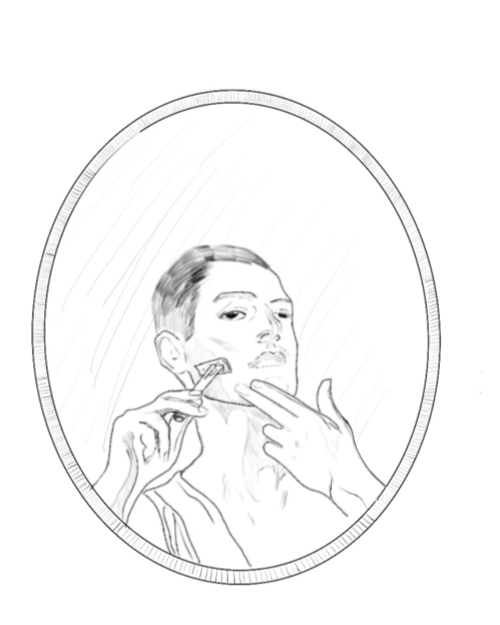“I never felt a connection to Radcliffe, and I was a feminist,” Jill Abramson ’76 prefaced in her interview. Abramson was among the first class of women to live in Harvard Yard as a First-Year in 1972. Even though she lived at Harvard, she was still technically a student at Radcliffe College, which only three years earlier, acted as the separate women-only annex of the exclusively male Harvard College. The separation of the sexes did not stop Harvard men from coming up with the lovely nickname “Cliffie Bitch” for their counterparts at Radcliffe.
The “Cliffie Bitch,” a term even the Harvard Independent was guilty of printing, referred to the woman who ignored her male peers’ romantic advances to study, committed seriously to her academics, and engaged actively with social justice issues. All these qualities rendered the “Cliffie Bitch” no fun.
As coed housing became the norm, and many women were granted the opportunity to live in the River houses, the stereotype did not die. In the 1970 article, “A Boy Next Door,” Chris Cuddy of the Harvard Independent writes, “most Cliffies just aren’t up for a mixer,” and describes Cliffies as “blasé.” However, there was a shift in the term’s usage at this time: it now only applied to women choosing to continue living in Radcliffe dorms, which were at the time the only place on campus where you could find a slight female majority, with a three-to-two ratio.
The women who chose to move to the River houses, on the other hand, were given a taste of what it was like to be a part of the boy’s club. Once the women experienced the comparative luxury of life along the River, it was difficult to return to the subpar conditions back at Radcliffe.
As Cuddy wrote, “Why would anyone trade a suite with a living room, a private bathroom, a fireplace, and convenience to the Square for a 10′ by 10′ single, bell desk duty, and a long walk?”
What persists as today’s common student sentiment, students at Harvard and Radcliffe in the 70s all agreed that the Harvard dorms far exceeded the quality of those at Radcliffe. Robert Mathews ’71, who graduated from Comstock, explained that Radcliffe had historically “inferior dorms” due to the disparity of resources devoted to all-female housing. As most students would choose comfort over keeping a tradition alive, leaving Radcliffe was the obvious choice. Plus, who would want to be called an uptight bitch? Sure, there was a six-to-one ratio of men to women, but living at the River meant you were a cool girl.
Over time the myth of “Cliffie Bitch,” once a powerful woman who did not need male approval, would fade away with its namesake, as Radcliffe and Harvard merged and the Radcliffe Quadrangle became the Quad. Now, Radcliffe College has been subjugated to the Harvard-Radcliffe Institute, and while it currently regards itself “one of the world’s leading centers for interdisciplinary research and exploration,” its alumnae are dying out.
Abramson reflects that “it’s sad that Radcliffe has no identity anymore, it was such a distinguished institution.” A similar sentiment is echoed by many female alumni who took part in the coed living experiment. In retrospect, they feel great appreciation for all of what Radcliffe stood for—women’s empowerment in education, chronicling women’s history—but at the time, they acclimated to Harvard living so quickly that they never felt an allegiance to Radcliffe.
At a recent conference they hosted in the Radcliffe Institute’s Knafel Center, entitled “The Age of Roe: The Past, Present, and Future of Abortion of America,” front-line workers discussed reproductive health justice at length. Although impressive speakers and attendees from both sides of the abortion arguments were present, only a handful of students attended. Most Harvard students do not know where the Institute is or what it offers, despite it being one of the only places on campus that prioritizes women and femme-focused issues.
Why don’t students who identify as women and/or femme use a space created for them and their history? Why have we allowed Radcliffe College to disappear behind Harvard forever? Why would students who considered themselves “feminists” in the 70s have no connection to Radcliffe?
Perhaps the answer lies in the death of the “Cliffie Bitch.” As women began to enjoy improved living conditions , better-funded clubs, and general perks of Harvard’s virtually limitless resources, they were often forced to sever ties with Radcliffe.
Going co-ed meant getting equal access, and now, women and femmes make up the majority of Harvard’s student body. Yet, many of our social, extracurricular, and educational spaces still revolve around the whims of men, and there are still scant resources available for issues such as abortion and sexual assault, which primarily affect women and femmes. Harvard is a notoriously conservative establishment—resistant to change and anything with an avoidable price tag. Institutional advancement often requires more than traditional methods of advocacy; and in some ways, a type of Bitchiness.
It is so easy to fall into the trap of being happy with the allowances men have given us, but that does not mean we cannot ask for more from our peers and our school. When you think about all the things that make you angry about identifying as a woman at this institution—reporting a sexual assault and the solution being to get a “restraining order” through the College (and nothing on the perpetrator’s record)—for one, embrace it. If we want change, we need to embrace the Bitch again, or at least the reality that we may be perceived as one. In doing so, we honor not only each other, but Radcliffe’s legacy.
Seattle Hickey ’25 (seattlehickey@college.harvard.edu) wishes she was more of a Bitch.

